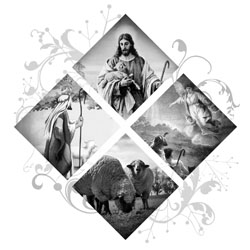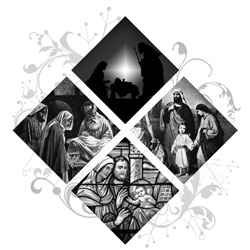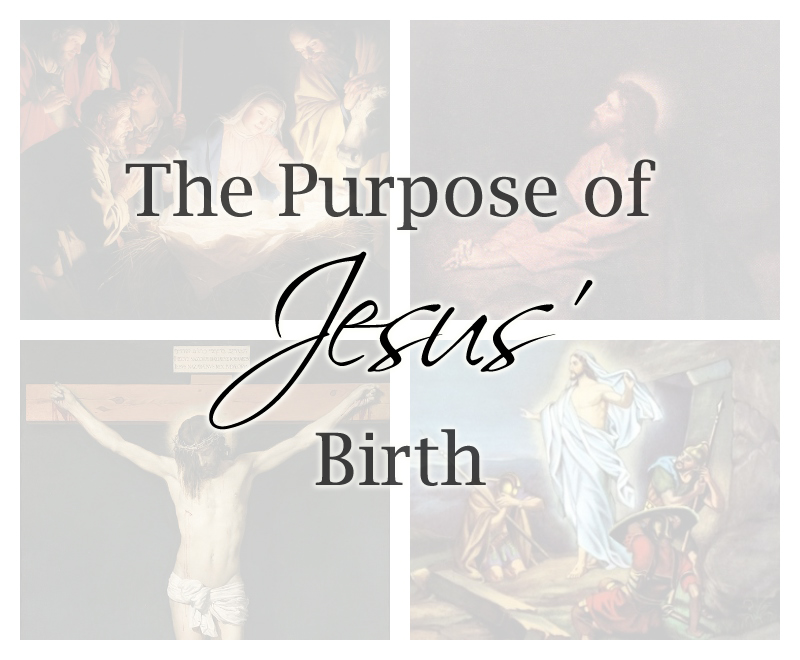Angels
This page examines the history of angels as a Christmas symbol. The text is drawn from our featured Christmas Book and is also available for free as audio.

The term angel literally means “messenger,” and it is in this prominent role that angels take part in the Christmas story. An angel appeared to Mary to announce the birth of Christ (Luke 1:26-38). An angel appeared to Joseph telling him that what was conceived in Mary was from the Holy Spirit (Matthew 1:20-21). And, an angel appeared to shepherds to announce the birth of Jesus after which “a great company of the heavenly host” appeared (Luke 2:8-14).
Understandably, images of angels have become a familiar symbol of Christmas. However, contrary to their depiction as gentle feminine creatures that top Christmas trees and hover over Nativity Scenes, the Bible reveals angels as persons of tremendous strength. Psalm 103:20 refers to angels as the “mighty ones” who do God’s bidding. On one occasion, as recorded in 2 Kings, a single angel killed 185,000 soldiers over night at the Lord’s command (2 Kings 19:35).
That may sound a bit terrifying, but the strength of God’s holy angels is actually great news for believers. After all, angels follow the commands of a God that loves and protects his people. Psalm 91 says:
“If you make the Most High your dwelling — even the Lord, who is my refuge — then no harm will befall you, no disaster will come near your tent. For he will command his angels concerning you to guard you in all your ways; they will lift you up in their hands, so that you will not strike your foot against a stone” (Psalm 91:9-12).
At the time of Christ, a belief in guardian angels was already prevalent among the Jews, so it came as no surprise to them when Jesus, speaking about children, said, “Their angels in heaven always see the face of my Father in heaven” (Matthew 18:10).
Several references throughout the Bible imply that angels have assignments not only to people, but to churches (Revelation 1:20), nations (Daniel 10:13;12:1) and even nature (Revelation 7:1). For example, Revelation speaks of “the angel in charge of the waters” (Revelation 16:5).
So what do angels really look like? In their natural state, angels are spiritual beings and do not have physical or material bodies. This doesn’t mean that they are without “form.” Humans simply don’t have the eyes to see their spiritual bodies. Thus, on several occasions, angels have assumed a physical body in order to communicate with men.
The Bible describes angels as dressing in white, gleaming like lightning, and wearing clean, shining linen with gold sashes around their chest (Daniel 10:5-6; John 20:12; Luke 24:4; Revelation 15:6). The only classes of angels clearly described as having wings are the Seraphim and the Cheribum who seem to guard or attend the throne of God (Isaiah 6:2; Exodus 25:20). Regardless, wings have become a standard feature in our depiction of angels – perhaps an artistic way to portray the speed at which angels can travel. In the same way halos are an artistic way to portray the “gleam” of angels.
Yet, of all the recorded angelic appearances in the Bible, the most fascinating may be the most ordinary — so ordinary that humans do not even realize they have been visited by an angel. The book of Hebrews says, “Do not forget to entertain strangers, for by so doing some people have entertained angels without knowing it” (Hebrews 13:2).
Surely, there are many facets of angelic beings that remain a mystery to humans, and believe it or not, there are some aspects of humanity, particularly God’s grace toward us, that appear to be a mystery to angels. Imagine discovering that the Creator of the Universe had chosen to become a man. Imagine knowing the true identity of Christ, the King of Kings, yet witnessing his most humble birth and his most ordinary Jewish upbringing. As Jesus grew into a man and began his ministry, imagine seeing men hurl insults at, and ultimately crucify, the Author of Life and Salvation.
Apparently, the work of Christ on earth was indeed a mystery to the angels. When speaking of grace and salvation, 1 Peter says, “Even angels long to look into these things” (1 Peter 1:12b). May our amazement surpass that of the angels, for we, unlike them, are the recipients of God’s grace and salvation!
This page was created by:

Back to main Christmas Symbols page.
We welcome your ideas! If you have suggestions on how to improve this page, please contact us.
This content has a copyright © 2008 by Angie Mosteller. You may freely use this content if you cite the source and/or link back to this page.






